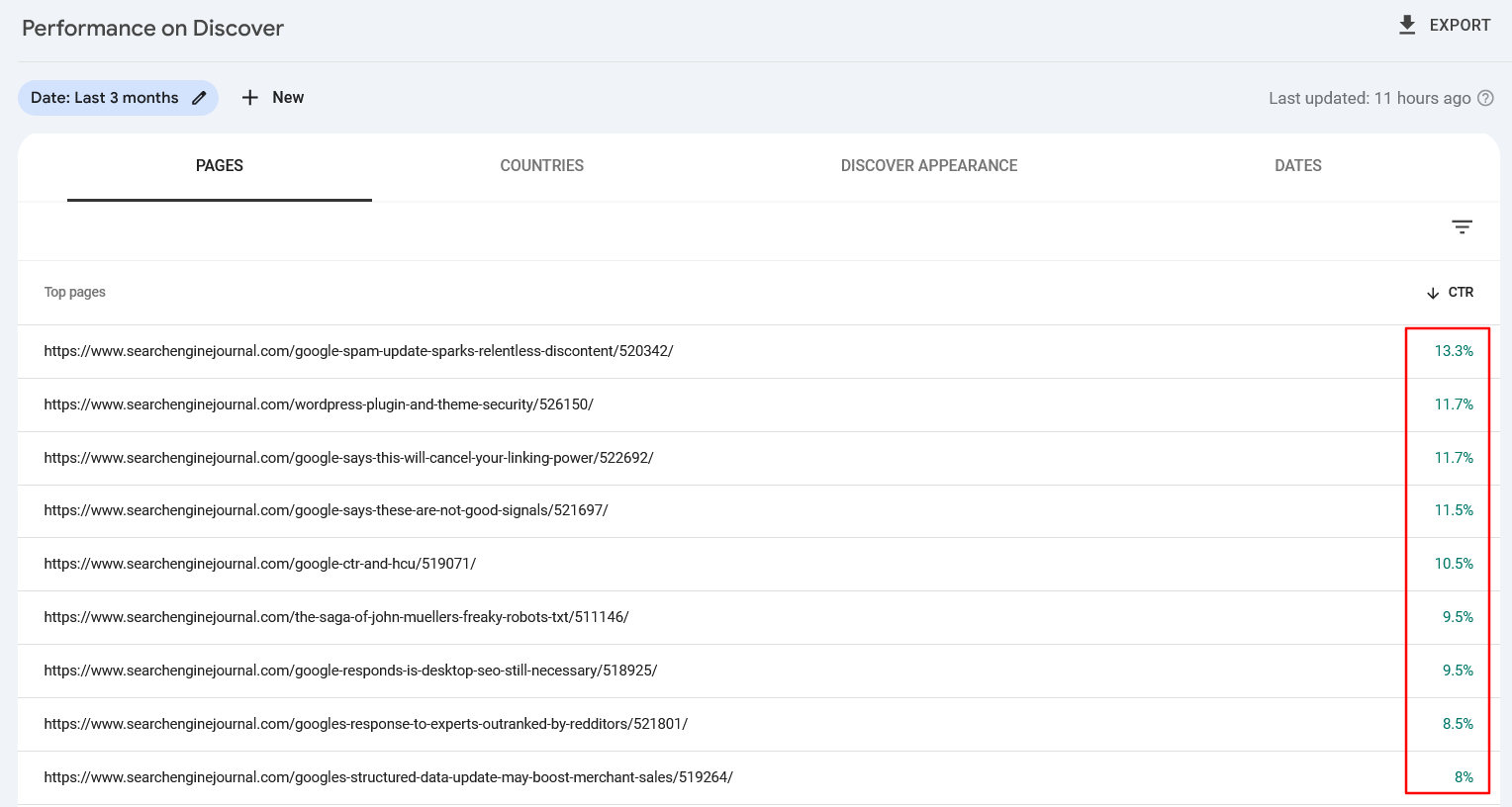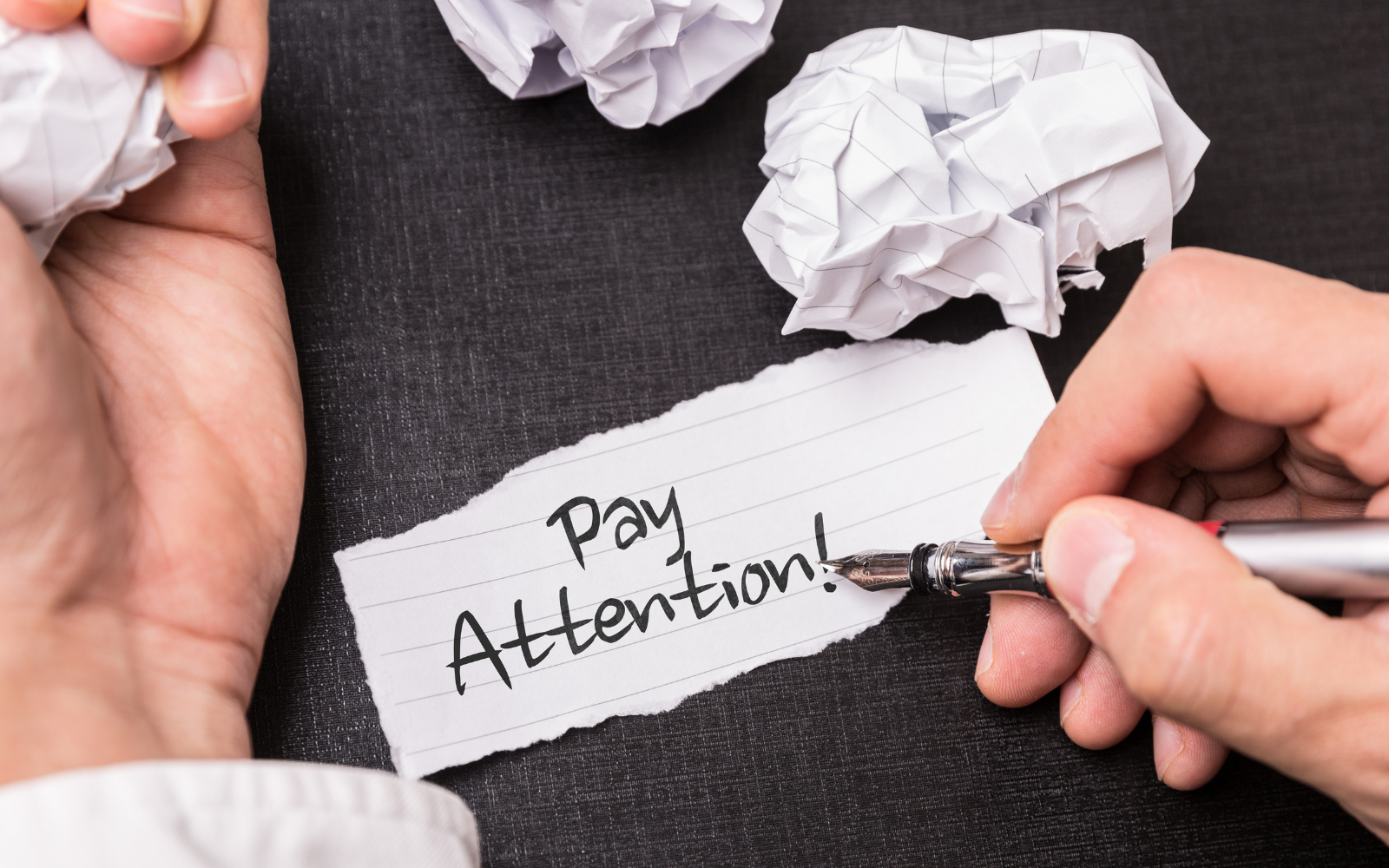As digital marketers and brands everywhere struggle for user attention online, the headline is perhaps one of the most important tools at our disposal.
And though crafting a perfect headline might sound easy, there are many considerations that go into getting it right.
To help your content creation, we’ll uncover the secrets of writing headlines that people actually want to click – and that will drive traffic to your content.
We’ll look at the significance of the headline and some common mistakes people make before diving into 10 tips for writing headlines that deliver.
Let’s get started.
How Important Is The Headline?
In the world of content marketing, the headline reigns supreme.
Your headline is the first point of interaction a reader has with your piece of content, and it often determines whether or not someone decides to click through and learn more, or to continue scrolling and potentially never think of your brand again.
Content marketing is more competitive than ever.
Users are producing 70 million new posts per month on WordPress alone – and with so many brands and individuals creating so much content, it’s a struggle to even get your headlines in front of people.
But once they see it, it’s imperative that your headline compels them to engage further.
That means knowing how to craft a strong headline, which is easier said than done. Consider that 90.63% of content gets no traffic from Google – and that can be at least partially attributed to poor headlines.
A good headline will make you stand out from the crowd, increase your chances of drawing in more readers, and ultimately lead to more customers.
In an ideal world, you want to attract readers while offering value, accurately representing your content, and aligning with search intent.
A compelling headline can also help you excel in search and boost your performance on Google Discover, where titles can greatly impact click-through rates – and which has become a source of website traffic for many publishers.
 Screenshot from Google Discover, September 2024
Screenshot from Google Discover, September 2024By putting readers first and keeping SEO best practices top-of-mind, you can strike the right balance.
Let’s dive into a few specific reasons why the headline is so important.
First Impressions Are Key
As we discussed above, the headline is the first thing a reader sees, and it lets them know what they can expect from you.
According to Copyblogger, on average, eight out of 10 people will read a headline, while only two out of 10 will then go on to read the content.
You’ve got one shot to make an impression, so you’d better get it right.
SEO Significance
Search is the single largest online traffic source, and this makes it an incredibly powerful tool for reaching new audiences.
A well-optimized headline can help search engines like Google understand what your content is about and help it gain higher rankings in search engine results pages (SERPs), boosting your visibility with searchers.
Social Media Engagement
While newer than search, social media is an important mechanism for driving traffic to your content.
By writing solid headlines that pique people’s attention and drive engagement, your content will see more clicks and more shares, driving earned engagements.
Building A Positive Brand Reputation
Strong headlines don’t just create a positive impression with users; they can, over time, positively impact your brand’s reputation.
If readers know they can come to you for quality headlines that grab their attention and accurately represent the content they’re going to read, they will naturally develop trust and admiration for your brand.
Should You Write A Headline For Search Engines Or Users?
Ah, the age-old question: Should you cater your headlines primarily to search algorithms, or living, breathing humans?
The answer, of course, is a bit of both. In writing a strong headline, finding a balance between user-friendliness and SEO is crucial.
Let’s explore a few reasons why this matters:
Focus On The User
When writing a headline, you should be prioritizing the users who will make up your audience. After all, the headline’s primary goal is to capture people’s attention, and encourage them to read more.
And people are more likely to engage with content that aligns with their needs, interests, and emotions.
If it doesn’t resonate with them, they won’t click through – and your efforts will be for naught.
SEO Considerations
On the other hand, if your headline isn’t search engine friendly, the chances of it being seen are diminished.
That’s why SEO is so important; it helps ensure that users will actually get the chance to discover your content when they’re searching.
Optimizing your headline and including relevant keywords can help you gain visibility in the SERPs, leading to more clicks.
Natural Language And Intent
With developments in technology and the rise of AI, search engines have become extremely good at understanding user intent.
Today, sites like Google are able to decipher the context and quality of content without relying on exact keyword matches.
Because of this and how search algorithms have evolved, writing for users first is often the best way to write for search engines.
Google Discover
Google Discover, which is a section of Google Search that shows users recommended content based on their interests and activity, is becoming a much more prominent source of traffic.
As with other places online, headlines are the first thing users will see on Google Discover – so it’s all about making the most of your brief opportunity.
By crafting engaging headlines that are clear, concise, and timely, you could turn Google Discover into a significant traffic source for your business.
Should The H1 Headline Be The Same As The Meta Title?
One common question people ask when crafting headlines is whether the H1 headline and meta title should be the same.
For context: Your H1 headline is the on-page title that people will see when they click through to your content, and the meta title is what appears on the SERPs when somebody conducts a search.
And while it’s not necessary for your H1 headline and meta title to be the same, you should always remember to aim for consistency.
In a perfect world, your meta title and H1 are as similar as possible, so that you provide a consistent user experience – and readers know exactly what they’re getting into.
However, if you need to tweak either one slightly – perhaps optimizing the meta title with additional keywords, or changing your H1 headline to better suit the flow of your content – you should feel free to do so.
Just make sure both are clear and relevant to your content, and when the user clicks through from the meta title, they land on the content they expect to find.
The safest strategy is to keep them similar, but make slight differences where needed to optimize for each channel.
Common Headline Mistakes To Avoid
Before looking at tips for creating powerful headlines, let’s look at some common mistakes you should strive to avoid.
Clickbait Headlines
Popular on social media, clickbait headlines are designed to elicit curiosity and provoke users into clicking.
They often use outrageous premises in order to target people’s curiosity or promise to reveal something shocking and never-before-seen.
Some examples of what a clickbait headline might look like:
- “Woman Grows Tree Inside Her Kitchen – The Result? Jaw-Dropping!”
- “10 Insane Urban Garden Secrets Big Plant Stores Hide From You!”
- “Why Every City Gardener Is Rushing To Get This Mystery Plant!”
While these might be good at encouraging people to click, they typically misrepresent the actual content and don’t deliver authentic value.
In this way, clickbait can really hurt your credibility over the long term, disappoint your users, and erode trust in your brand.
Keyword Stuffing
We know it’s important to include relevant keywords in your headline so that they can rank higher on search engines – but there’s such a thing as going too far.
Throwing as many keywords as you can into a headline is known as keyword stuffing, and it can deter users and even be penalized by search engines.
Some examples of what a keyword-stuffed headline might look like:
- “Rooftop Garden Guide: Rooftop Plants, Rooftop Designs, And Rooftop Ideas!
- “Urban Garden Tips: Best Urban Plants For Urban Spaces In Urban Areas!”
Prioritizing search engine ranking over the user experience might sound like a good idea, but search engines are smart enough to notice – and it could do long-term damage to your brand and rankings.
Confusing Or Complex Language
You want your headlines to be easily understandable by your target audience and the general reader – and that means making your language straightforward and accessible.
Unless you’re specifically creating content only for a niche audience of experts and aren’t interested in reaching a broader group of readers, we would not recommend using words and phrases or terminology that is unfamiliar to the average person.
Here are some examples of headlines that use confusing jargon:
- “Synthesizing Biophilic Paradigms For Metropolis Greenification.”
- “An Examination Of Mesofauna Interactions In High-Rise Agroforestry.”
Punctuation And Grammar Errors
This perhaps goes without saying, but do your best to ensure your headline includes correct punctuation and grammar.
It’s totally normal (and okay!) to make mistakes, but we recommend double-checking for any errors before publishing your headline, as they can hurt your credibility and lead readers to doubt your expertise.
Here’s an example of headlines that feature noticeable errors:
- “Your doing it wrong: Plants not to put in City Gardens!”
- “Plants; the best ones, for balconies and rooftops!”
10 Tips For Writing Headlines That Deliver
Now, it’s time to dive into some tips for creating headlines that people will want to click on.
1. Keep It Short & Sweet
As internet users, we know all too well that most readers are simply skimming through content at a glance.
Between short attention spans and limited space to play (in areas like search results and social feeds), overly long headlines are not the way to go – they’re often either ignored or cut off.
For this reason, it’s imperative that you keep your headlines concise and to the point. As a best practice, we recommend trying to keep your headlines somewhere between 50 and 60 characters so they’re not cut short.
So, instead of this:
- “Check Out Our Comprehensive Guide To Understanding All The Intricacies Of Modern Home Gardening Techniques In Urban Environments.”
You want something more like this:
- “Master Modern Urban Gardening With Our Essential Guide.”
2. Consider The Nuances Of Your Audience
Not all audiences are created equal or have the same preferences.
It’s important to cater your headline to the specific audience you’re trying to reach, and align with their cultural touchpoints. This might change based on your audience’s geography, demographics, interest areas, or more.
For example, while you might want to emphasize subtlety and sophistication for a UK audience, you might leverage bolder, more flamboyant headlines to reach an American readership.
Here are some examples of how that might look in practice:
- U.S. Audience: “10 Game-Changing Tips To Turn Your Home Into A Plant Oasis”
- UK Audience: “10 Proven Strategies For Masterful Urban Gardening.”
3. Address A Pain Point Or Need
What drives you, as a reader, to click on a headline and read more?
I’m willing to bet that you’re more likely to take the time to engage with content if it speaks to a problem you’re facing, a question you might have, or a specific need you’re experiencing.
Powerful headlines are those which identify something your target audience is interested in, and then position your content as a solution or pathway to that interest.
An example of what that might look like:
- ‘”Struggling With City Air? Try These 5 Air-Purifying Plants!”
4. Remember The 5Ws
You might already know about the 5Ws, which are a well-known principle among writers and journalists.
The idea is that when writing something, you should include the 5Ws – who, what, when, where, and why – as early as possible, to provide people with the necessary information.
When creating headlines for digital marketing and social media, we don’t often have much space. So, you might want to focus on the most critical three: who, what, and why.
This doesn’t necessarily mean you need to include specific words for each of these. It simply means making it clear who your content is for, what the premise of your content is, and why they should engage with it.
An example of a headline that considers the 5Ws:
- “What To Grow & When: LA’s Urban Garden Must-Haves.”
5. Use The 4 U’s Framework
The “4 U’s” is another useful technique to help you craft great headlines. The idea is that every headline you create should incorporate these 4 U’s:
- Urgent: Your headline should convey a sense of immediacy, and encourage readers to act ASAP.
- Unique: Your headline should convey that your content is different from other pieces of content.
- Useful: The headline should make it clear that your content will offer value to the reader.
- Ultra-specific: The reader should be able to understand exactly what they’ll find in the content.
It isn’t always possible to incorporate all four of these elements in one short headline, so a best practice is to strive to include at least two of them. This will make the headline much stronger than it would be otherwise.
Here are some examples of what this looks like:
- Useful & Ultra-specific: “10 Vegetables You Can Harvest In Just 30 Days In City Spaces.”
- Urgent & Useful: “Start Today: 5 Quick Steps For Urban Gardening Success!”
6. Try Numbered Lists
Ever noticed how many listicles there are floating around the internet? Feel like you’re seeing a lot of numbered headlines lately? It’s true – and for good reason.
Research from Buffer and CoSchedule found that list posts are the most highly shared kind of headlines on social media.
Why? They’re easily skimmable; they carry the promise of quick tips and pointers; and they leave a little bit of room for curiosity – what could those 10 tips be?!
Utilizing numbered lists is a great way to reach today’s busy internet users and let them know exactly what you’re going to provide for them.
And here’s a hot tip: According to BuzzSumo, the most engaging number to use in a list post headline is 10, followed by five and 15.
Here are two examples of strong numbered list headlines:
- “10 Essential Tools Every City Gardener Needs Today”
- “5 Surprising Benefits Of Modern Rooftop Gardens”
7. Tap Into Your Reader’s Emotions
Just like the best content appeals to the emotions of its readers, the same is true for headlines.
A headline that makes you laugh, touches your heart, surprises you, or piques your curiosity can help encourage you to take action and learn more.
Our emotions propel us to action in all areas of our life, and they’re a useful tool for content marketers.
So, keep these ideas top of mind as you craft your headlines. How can you elicit an emotional response from people quickly – whether that’s empathy, shock, or even anger?
Some examples:
- “Garden Therapy: 6 Plants To Boost Mental Well-Being”
- “Lost A Plant Friend? 5 Tips To Ensure The Next One Thrives”
8. Leverage Power Words
Using powerful adjectives and verbs can go a long way in encouraging people to click your headlines.
Descriptive and powerful words can help connect with people’s emotions and create a sense of urgency to take action – important things we have already touched on.
Examples of impactful words are terms like “essential,” “must-have,” “secret,” “surprising,” and so on.
You want to focus on getting people excited about your content and making them feel like they’re missing out on something big if they don’t click through.
Here are some examples:
- “5 Critical Mistakes Every New City Gardener Must Avoid”
- “10 Insider Tips To Help You Revitalize Your Urban Garden”
9. Ask Questions
The question is another tried-and-true technique for compelling headlines. Why?
Well, think about it. When you’re confronted with a question, the first thing you do is consider what the answer might be. By asking a question in your headline, you’re inviting readers to think about something and creating an incentive for them to find the answer.
You’re also making it clear that they will find the answer – or at least an exploration of the topic – within your content.
The other great thing about questions is that they allow you to tap into trending conversations, giving you an edge of timeliness and zeroing in on what your audience cares about right now.
Here are two examples:
- “Why Are Urban Gardens The Future Of City Living?”
- “Are Rooftop Gardens Truly The Solution To Urban Heat?”
10. Test And Analyze
Don’t forget to regularly A/B test your headlines to stay on top of which approaches, phrases, terms, and tactics are resonating best with your audience.
This will help you optimize them over time so that you can ensure you’re getting the most juice from the squeeze.
In Summary
Writing a great headline is no easy feat.
It’s a delicate balancing act that requires a good grasp of the data, intimate knowledge of your audience, an awareness of cultural nuances, and a lot of creativity.
Next time you’re crafting a headline, try leveraging some of the information we’ve shared above. This should help you reach readers where they are, and start driving more traffic to your content!
More resources:
- How To Write Great SEO Titles
- Title Tag Optimization: A Complete How-To Guide
- Perfectly Optimized Content From Start To Finish
Featured Image: Gustavo Frazao/Shutterstock





